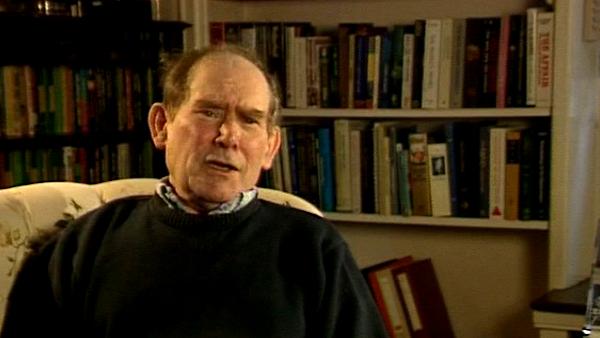NEXT STORY

Impressions of Watson and Crick
RELATED STORIES

NEXT STORY

Impressions of Watson and Crick
RELATED STORIES


|
Views | Duration | |
|---|---|---|---|
| 51. Taking advantage of Oxford University | 480 | 02:52 | |
| 52. Professor Dawkins and Quest for Corvo | 687 | 03:54 | |
| 53. The surprise of England | 430 | 02:11 | |
| 54. My secret input into the DNA model | 522 | 03:39 | |
| 55. The DNA model: the beginning of molecular biology | 1 | 586 | 03:39 |
| 56. Crick, Watson and the first model of the double helix | 577 | 02:20 | |
| 57. The first and second DNA structure papers | 672 | 04:17 | |
| 58. The real concept of the DNA code | 714 | 01:21 | |
| 59. Understanding the DNA model | 454 | 02:20 | |
| 60. Impressions of Watson and Crick | 930 | 03:54 |


Well, I had been grappling to this, that there were things that you'd have to do, because I had had ideas that you synthesised DNA, nucleic acid and protein together. So to me this was okay. You know, I had the ideas of one-dimensional sequences, and of course I was very much intrigued by computers and the von Neumann thing, these are one-dimensional sequences as well; tapes, the Turing machine is a one-dimensional sequence. And so all of this, this whole idea of the embodying of information in this, is in fact a… an important and fundamental breakthrough in my opinion, and to see that… because… and also to get away from mechanism. See, at that time all the biochemists of the world were preoccupied, as where do you get the energy to make proteins? And we had to spend weeks, months saying, 'Don't worry about the energy, energy will look after itself; the important thing is how do you get everything in the correct order? How do you get everything to be specified in this order?' That is, the genetic code is the thing. So I think that this is such an important and fundamental divergence from anything else in biology that it is, you know, a total discontinuity – at least this is the way that I've seen it – and it has of course constrained quite a lot of later developments in biology. And of course crystallises the actual problems you have to solve in a very clear-cut way, because now they do not remain sort of vague problems that... that you can just ask almost rhetorical questions about, but you can actually sit down and say, 'If I had a gene that I could do the fine structure, and if I had a protein that I could sequence, then I could show whether or not the gene was co-linear'.
South African Sydney Brenner (1927-2019) was awarded the Nobel Prize in Physiology or Medicine in 2002. His joint discovery of messenger RNA, and, in more recent years, his development of gene cloning, sequencing and manipulation techniques along with his work for the Human Genome Project have led to his standing as a pioneer in the field of genetics and molecular biology.
Title: Understanding the DNA model
Listeners: Lewis Wolpert
Lewis Wolpert is Professor of Biology as Applied to Medicine in the Department of Anatomy and Developmental Biology of University College, London. His research interests are in the mechanisms involved in the development of the embryo. He was originally trained as a civil engineer in South Africa but changed to research in cell biology at King's College, London in 1955. He was made a Fellow of the Royal Society in 1980 and awarded the CBE in 1990. He was made a Fellow of the Royal Society of Literature in 1999. He has presented science on both radio and TV and for five years was Chairman of the Committee for the Public Understanding of Science.
Tags: John von Neumann
Duration: 2 minutes, 21 seconds
Date story recorded: April-May 1994
Date story went live: 24 January 2008